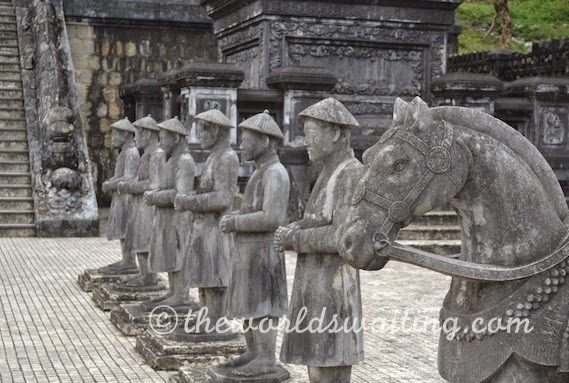
Vietnam’s Tomb of Khai Dinh, a tomb with a view
Being the home of Vietnam’s imperial history, Hue boasts several impressive tombs. Sounds a bit morbid, but if you haven’t seen an Asian tomb, you should. They are very impressive places!
Emperor Khai Dinh was the penultimate emperor of the Nguyen Dynasty, reigning from 1916 – 1925, and he was the last emperor to be buried in a royal tomb.
A tomb with a view
His tomb is quite distinct from other royal tombs. Firstly, it is significantly smaller than others. Its construction, three levels built into a steep hillside, makes it feel more like a monument than a place of quite reflection. 127 steps make exploring it quite a workout!

Having climbed about 30 steps you arrive at the first level, surrounded by dragons. The second level is the imperial audience court. The centrepiece is a large octagonal monument, and the court is lined with stone statues of guards and horses.
An opulent tomb
The main tomb room, and a few other rooms, comprise the top level of the tomb. In stark contrast to the heavy ‘black’ theme of the rest of the compound, the main tomb is opulent. A bronze cast of Khai Dinh sits atop a richly decorated platform and the walls of the other nearby rooms are inlaid with glass and porcelain. The detailed bonze has certainly travelled; it was cast in Marseille, France!

As you emerge from visiting the main tomb there is an impressive view across the Chau Chu mountain valley. If you look carefully there is a large white statue of Buddha on a far away hill. When cloaked in mist, it seems a very spiritual place. Of course, what goes up must come down and having climbed all those staircases, you now need to descend them. It is at this point that you truly realise how steep they are, so mind your step!




